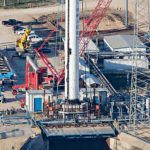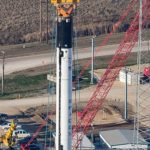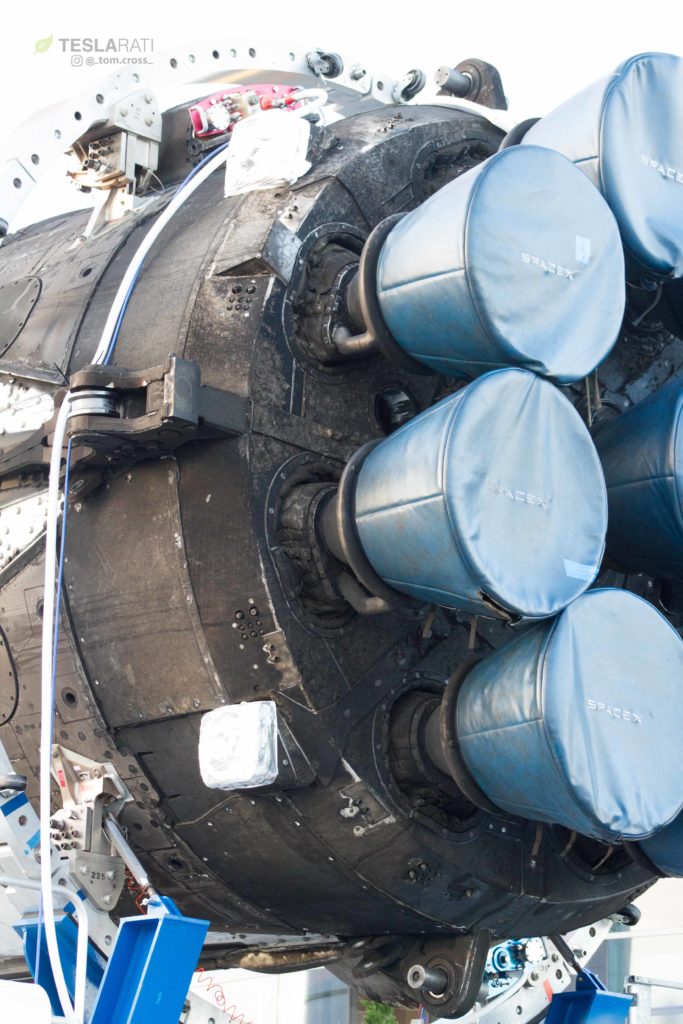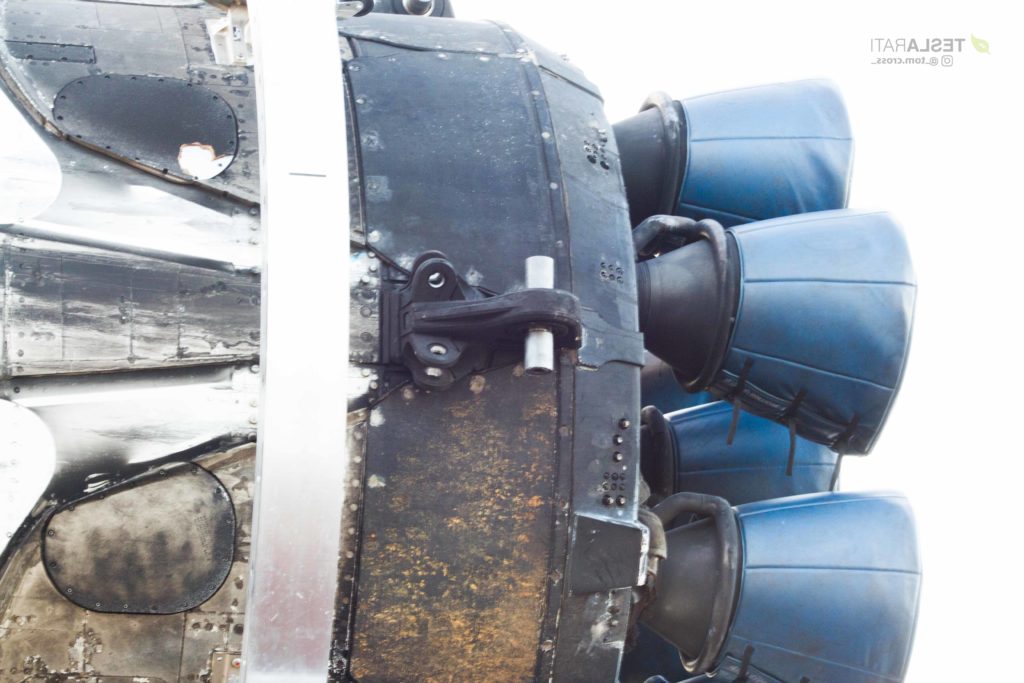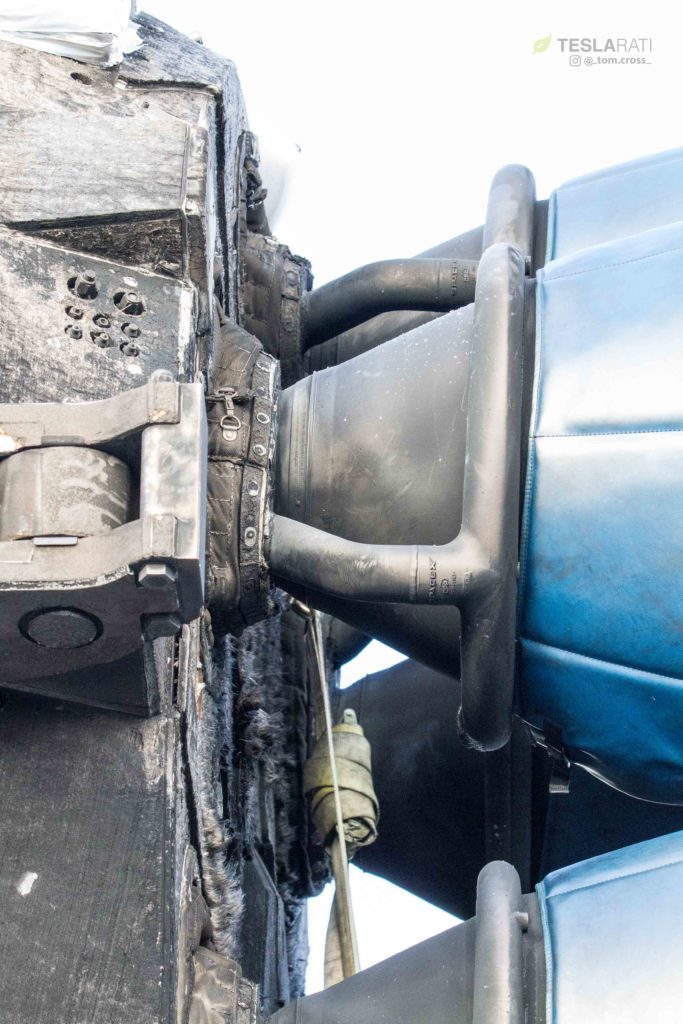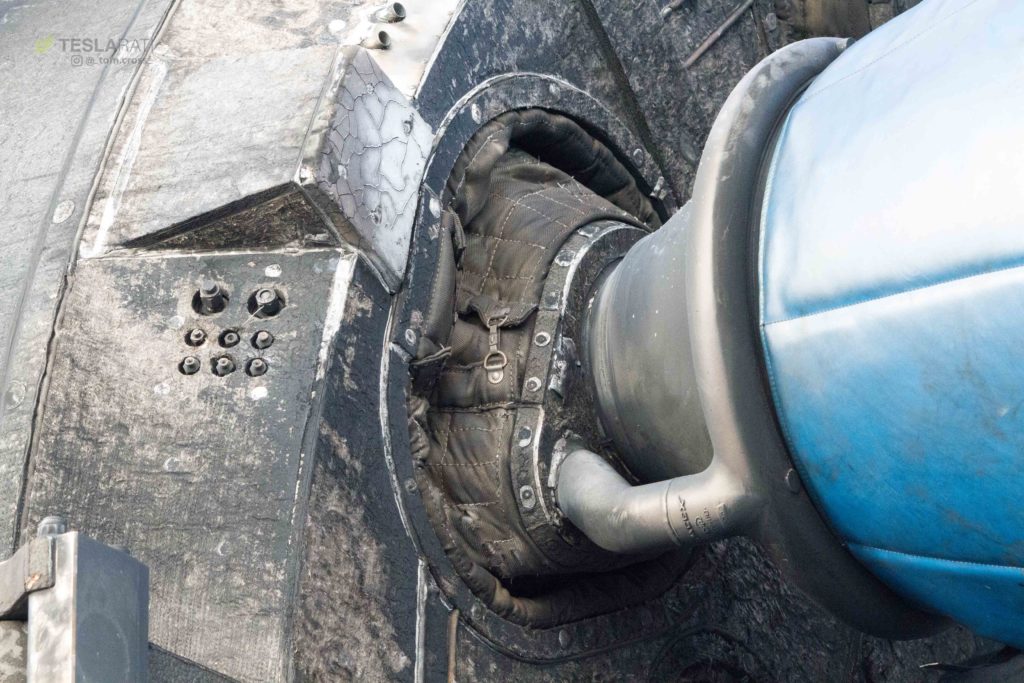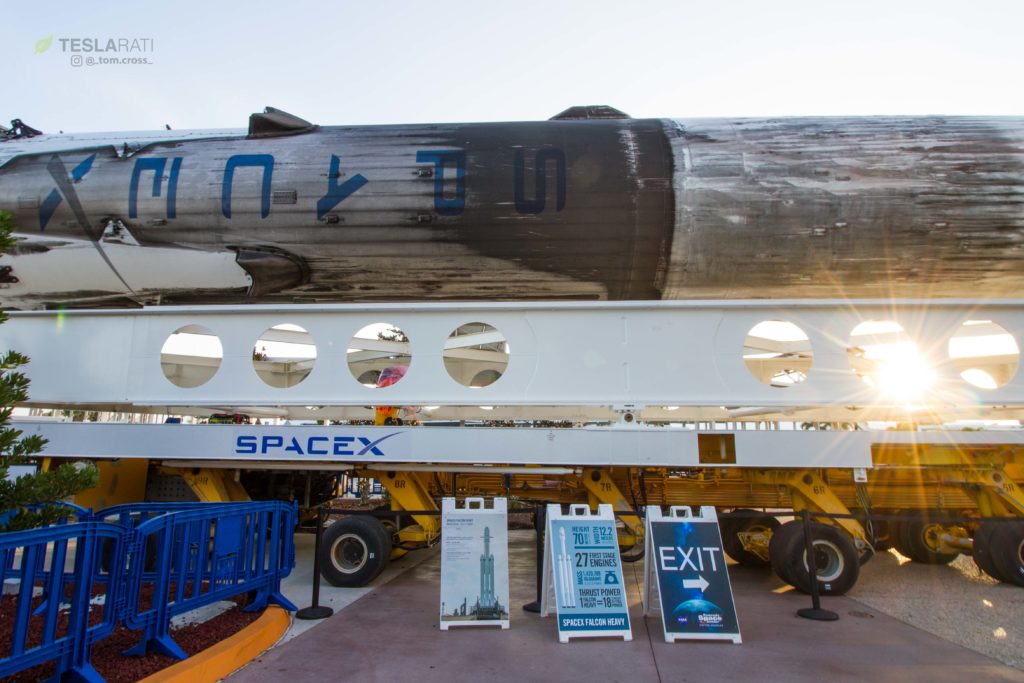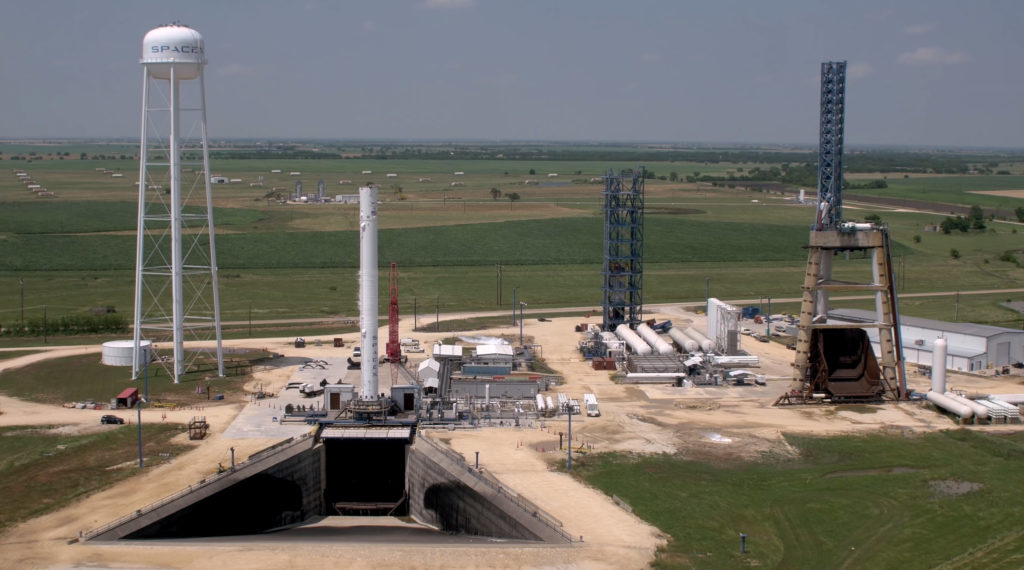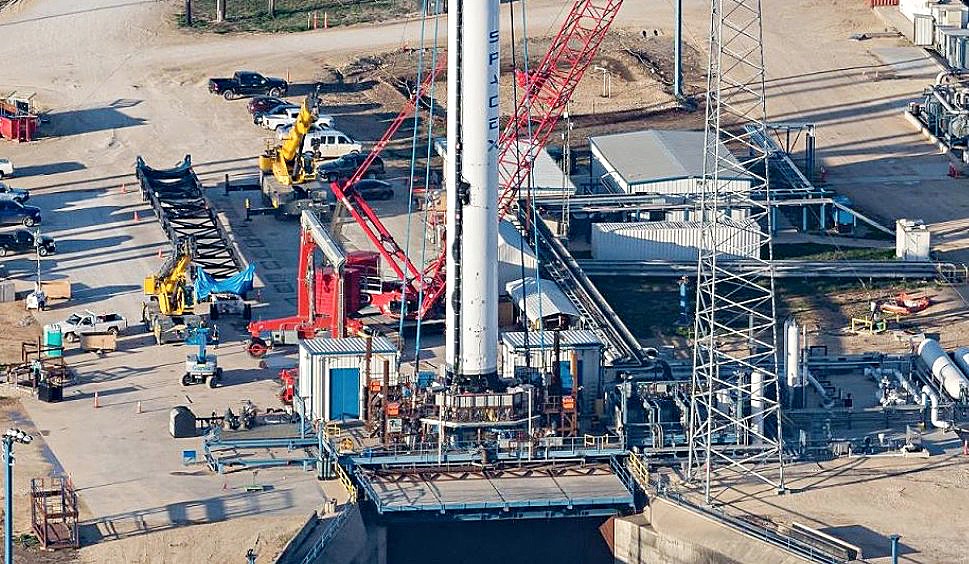

News
SpaceX Falcon 9 “Block 5” next-gen reusable rocket spied in Texas test site
SpaceX’s next and final generation of Falcon rockets is nearly ready to complete its biggest milestone yet, second only to operational launch. Known as Falcon 9 Block 5, the upgraded booster arrived at SpaceX’s McGregor, TX test facilities and went vertical on the static fire test stand.
Now vertical, that first integrated static fire is likely to occur within a handful of days at most. Once complete, assuming the data it produces do not betray any bugs or serious problems, the booster will be brought horizontal and transported to one of SpaceX’s three launch facilities for its first operational mission.
Why Block 5?
With nary a hint of hyperbole, it’s safe to say that Falcon 9 Block 5 will be the most significant piece of hardware ever developed and fielded by SpaceX. The reason lies in many of the changes and upgrades present in this newest iteration of the rocket. While Falcon 9 B5 and its similarly upgraded Merlin 1D engines include design changes intended to satisfy NASA requirements before SpaceX can be certified to launch humans, the brunt of the upgrades are laser-focused on ease and speed of reusability.
- SpaceX Block 5 Falcon9 at McGregor, Texas [Credit: Chris G – NSF via Twitter, Reprinted with permission from NASASpaceflight.com]
- SpaceX Block 5 Falcon9 at McGregor, Texas [Credit: Chris G – NSF via Twitter, Reprinted with permission from NASASpaceflight.com]
- SpaceX Block 5 Falcon9 at McGregor, Texas [Credit: Chris G – NSF via Twitter, Reprinted with permission from NASASpaceflight.com]
Photo courtesy of Chris G at nasaspaceflight.com via Twitter. Reprinted with permission.
The goal with those upgrades, as publicly stated by numerous SpaceX executives, is to enable as many as 10 flights with a bare minimum of refurbishment and 100 or more launches with intermittent maintenance. To achieve those titanic aspirations, SpaceX has gathered a flood of data and experience earned through the recovery of nearly 20 Falcon 9 and Heavy boosters, as well as the successful reflight and second recovery of several of those same boosters. With that data in hand, the company’s launch vehicle engineers optimized and upgraded the rocket’s design to combat the worst of the extreme forces each booster is subjected to while returning to land (or sea).
- Falcon Heavy side booster B1025 gives a sense of the sheer brutality of reentry conditions. (Tom Cross)
- Note the pieces of cork that have been torn off by the buffeting and heat on the lefthand side. (Tom Cross)
- An incredibly detail shot of the side of the octaweb. The large chunk of smooth metal in the center is actually one of the booster’s connection points to the Falcon Heavy center core. (Tom Cross/Teslarati)
- A beautiful capture of one of the booster’s nine Merlin engines, showing off the pipe used to cool the engine bell, as well as the ceramic blanket that protects its more sensitive plumbing. (Tom Cross/Teslarati)
As evidenced by photos taken by Gary Blair, one of NASASpaceflight.com‘s most renowned L2 forum contributors, many of the visible differences between Block 5 and previous versions of Falcon 9 are a result of drastically improved and expanded heat shielding of its most sensitive and crucial components. While Falcon 9 B5’s black sections by all appearances look like naked carbon fiber composite, they are likely to be coated with an incredibly heat-resistant material known a Pyron. Portions of the booster that suffer from incidental scorching and extreme heating (aside from the octaweb) appear to have been treated with this material, including a pathway down the side of the rocket known as a raceway. The raceway is a protective enclosure for a variety of cabling and piping, essentially the rocket’s nervous system as well as the home of several the cold gas thrusters it uses to orient itself outside of Earth’s atmosphere.
In the past, SpaceX has used high-quality cork as a quasi-ablative thermal protection system for those same components, including the payload fairing. A major downside of cork, however, is that it is very ablative and tends to come off rather haphazardly in large chunks, all of which must either be spot-fixed or replaced entirely before a booster reflight. By replacing that cork with Pyron or a similar internally-developed material, those sensitive Falcon components may be almost totally insulated from and resistant to temperatures as high as 2300 °F (1200 °C)
- Block 5 looks similar to this Falcon 9, but with a deep black interstage and a black enclosure instead of the white covering seen running down the left side of the booster. (SpaceX)
Titanium grid fins are another central feature of Block 5, acting as a near-indefinitely reusable replacement for the aluminum grid fins SpaceX has traditionally used. Put through a huge amount of heating during reentry; aluminum grid fins have famously appeared to partially melt during some of the hottest booster recovery attempts. Titanium, a metal with a much higher melting point, will have no such problems, does not need ablative white paint, and certainly appear all but untouched by reentry in the cases of both their June 2017 debut and second flight on Falcon Heavy’s side boosters.
Finally and perhaps most importantly, is the octaweb – the assembly at the base of Falcon 9 responsible for safely transmitting nearly two million pounds of thrust from its nine Merlin 1Ds to the rest of the rocket’s structure, while also taking the brunt of the heat of reentry. Before Block 5, the octaweb was protected from that heating with an ablative thermal protection system, likely around 80% cork and 20% PICA-X, the same material used on Cargo Dragon’s heat shield. Based on comments made privately by individuals familiar with SpaceX, that ablative shielding is to be replaced by a highly heat-resistant metal alloy known as inconel. By ridding Block 5 of ablative heat shielding, SpaceX will no longer have to carefully examine and replace those materials after each launch, removing one of the biggest refurbishment time-sinks.

Titanium grid fins complete the highly reusable changes to Block 5 of Falcon 9. (NASA)
Combined, these various upgrades are intended to enable Falcon 9’s first stage to be reused almost effortlessly compared to previous iterations. With this vehicle, including the reusable fairing debuted on the launch of PAZ, SpaceX may well be able to achieve Elon Musk’s famous goal of lowering the cost of launch by nearly an order of magnitude. While SpaceX will likely use that cost reduction to first recoup its considerable investments in reusability and Falcon Heavy, major price drops may reach customers soon after. This Falcon 9, in particular, is unlikely to launch for another month or so, but when it does, it is perhaps the biggest step SpaceX has yet taken on the path to routine, rapid, and affordable access to orbit.
Teslarati – Instagram – Twitter
Tom Cross – Twitter
Pauline Acalin – Twitter
Eric Ralph – Twitter
News
Tesla launches in India with Model Y, showing pricing will be biggest challenge
Tesla finally got its Model Y launched in India, but it will surely come at a price for consumers.

Tesla has officially launched in India following years of delays, as it brought its Model Y to the market for the first time on Tuesday.
However, the launch showed that pricing is going to be its biggest challenge. The all-electric Model Y is priced significantly higher than in other major markets in which Tesla operates.
On Tuesday, Tesla’s Model Y went up for sale for 59,89,000 rupees for the Rear-Wheel Drive configuration, while the Long Range Rear-Wheel Drive was priced at 67,89,000.
This equates to $69,686 for the RWD and $78,994 for the Long Range RWD, a substantial markup compared to what these cars sell for in the United States.
🚨 Here’s the difference in price for the Tesla Model Y in the U.S. compared to India.
🚨 59,89,000 is $69,686
🚨 67,89,000 is $78,994 pic.twitter.com/7EUzyWLcED— TESLARATI (@Teslarati) July 15, 2025
Deliveries are currently scheduled for the third quarter, and it will be interesting to see how many units they can sell in the market at this price point.
The price includes tariffs and additional fees that are applied by the Indian government, which has aimed to work with foreign automakers to come to terms on lower duties that increase vehicle cost.
Tesla Model Y seen testing under wraps in India ahead of launch
There is a chance that these duties will be removed, which would create a more stable and affordable pricing model for Tesla in the future. President Trump and Indian Prime Minister Narendra Modi continue to iron out those details.
Maharashtra Chief Minister Devendra Fadnavis said to reporters outside the company’s new outlet in the region (via Reuters):
“In the future, we wish to see R&D and manufacturing done in India, and I am sure at an appropriate stage, Tesla will think about it.”
It appears to be eerily similar to the same “game of chicken” Tesla played with Indian government officials for the past few years. Tesla has always wanted to enter India, but was unable to do so due to these import duties.
India wanted Tesla to commit to building a Gigafactory in the country, but Tesla wanted to test demand first.
It seems this could be that demand test, and the duties are going to have a significant impact on what demand will actually be.
Elon Musk
Tesla ups Robotaxi fare price to another comical figure with service area expansion
Tesla upped its fare price for a Robotaxi ride from $4.20 to, you guessed it, $6.90.

Tesla has upped its fare price for the Robotaxi platform in Austin for the first time since its launch on June 22. The increase came on the same day that Tesla expanded its Service Area for the Robotaxi ride-hailing service, offering rides to a broader portion of the city.
The price is up from $4.20, a figure that many Tesla fans will find amusing, considering CEO Elon Musk has used that number, as well as ’69,’ as a light-hearted attempt at comedy over the past several years.
Musk confirmed yesterday that Tesla would up the price per ride from that $4.20 point to $6.90. Are we really surprised that is what the company decided on, as the expansion of the Service Area also took effect on Monday?
But the price is now a princely $6.90, as foretold in the prophecy 😂
— Elon Musk (@elonmusk) July 14, 2025
The Service Area expansion was also somewhat of a joke too, especially considering the shape of the new region where the driverless service can travel.
I wrote yesterday about how it might be funny, but in reality, it is more of a message to competitors that Tesla can expand in Austin wherever it wants at any time.
Tesla’s Robotaxi expansion wasn’t a joke, it was a warning to competitors
It was only a matter of time before the Robotaxi platform would subject riders to a higher, flat fee for a ride. This is primarily due to two reasons: the size of the access program is increasing, and, more importantly, the service area is expanding in size.
Tesla has already surpassed Waymo in Austin in terms of its service area, which is roughly five square miles larger. Waymo launched driverless rides to the public back in March, while Tesla’s just became available to a small group in June. Tesla has already expanded it, allowing new members to hail a ride from a driverless Model Y nearly every day.
The Robotaxi app is also becoming more robust as Tesla is adding new features with updates. It has already been updated on two occasions, with the most recent improvements being rolled out yesterday.
Tesla updates Robotaxi app with several big changes, including wider service area
News
Tesla Model Y and Model 3 dominate U.S. EV sales despite headwinds
Tesla’s two mainstream vehicles accounted for more than 40% of all EVs sold in the United States in Q2 2025.

Tesla’s Model Y and Model 3 remained the top-selling electric vehicles in the U.S. during Q2 2025, even as the broader EV market dipped 6.3% year-over-year.
The Model Y logged 86,120 units sold, followed by the Model 3 at 48,803. This means that Tesla’s two mainstream vehicles accounted for 43% of all EVs sold in the United States during the second quarter, as per data from Cox Automotive.
Tesla leads amid tax credit uncertainty and a tough first half
Tesla’s performance in Q2 is notable given a series of hurdles earlier in the year. The company temporarily paused Model Y deliveries in Q1 as it transitioned to the production of the new Model Y, and its retail presence was hit by protests and vandalism tied to political backlash against CEO Elon Musk. The fallout carried into Q2, yet Tesla’s two mass-market vehicles still outsold the next eight EVs combined.
Q2 marked just the third-ever YoY decline in quarterly EV sales, totaling 310,839 units. Electric vehicle sales, however, were still up 4.9% from Q1 and reached a record 607,089 units in the first half of 2025. Analysts also expect a surge in Q3 as buyers rush to qualify for federal EV tax credits before they expire on October 1, Cox Automotive noted in a post.
Legacy rivals gain ground, but Tesla holds its commanding lead
General Motors more than doubled its EV volume in the first half of 2025, selling over 78,000 units and boosting its EV market share to 12.9%. Chevrolet became the second-best-selling EV brand, pushing GM past Ford and Hyundai. Tesla, however, still retained a commanding 44.7% electric vehicle market share despite a 12% drop in in Q2 revenue, following a decline of almost 9% in Q1.
Incentives reached record highs in Q2, averaging 14.8% of transaction prices, roughly $8,500 per vehicle. As government support winds down, the used EV market is also gaining momentum, with over 100,000 used EVs sold in Q2.
Q2 2025 Kelley Blue Book EV Sales Report by Simon Alvarez on Scribd
-

 News3 days ago
News3 days agoTesla debuts hands-free Grok AI with update 2025.26: What you need to know
-

 Elon Musk6 days ago
Elon Musk6 days agoxAI launches Grok 4 with new $300/month SuperGrok Heavy subscription
-

 Elon Musk1 week ago
Elon Musk1 week agoElon Musk confirms Grok 4 launch on July 9 with livestream event
-

 News2 weeks ago
News2 weeks agoTesla Model 3 ranks as the safest new car in Europe for 2025, per Euro NCAP tests
-

 Elon Musk2 weeks ago
Elon Musk2 weeks agoxAI’s Memphis data center receives air permit despite community criticism
-

 News5 days ago
News5 days agoTesla begins Robotaxi certification push in Arizona: report
-

 Elon Musk2 weeks ago
Elon Musk2 weeks agoTesla reveals it is using AI to make factories more sustainable: here’s how
-

 Elon Musk2 weeks ago
Elon Musk2 weeks agoTesla scrambles after Musk sidekick exit, CEO takes over sales


